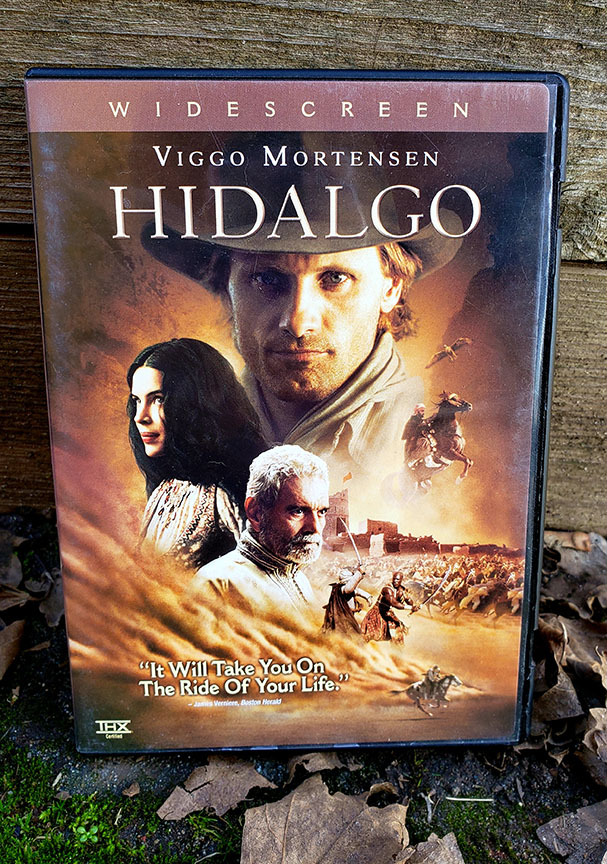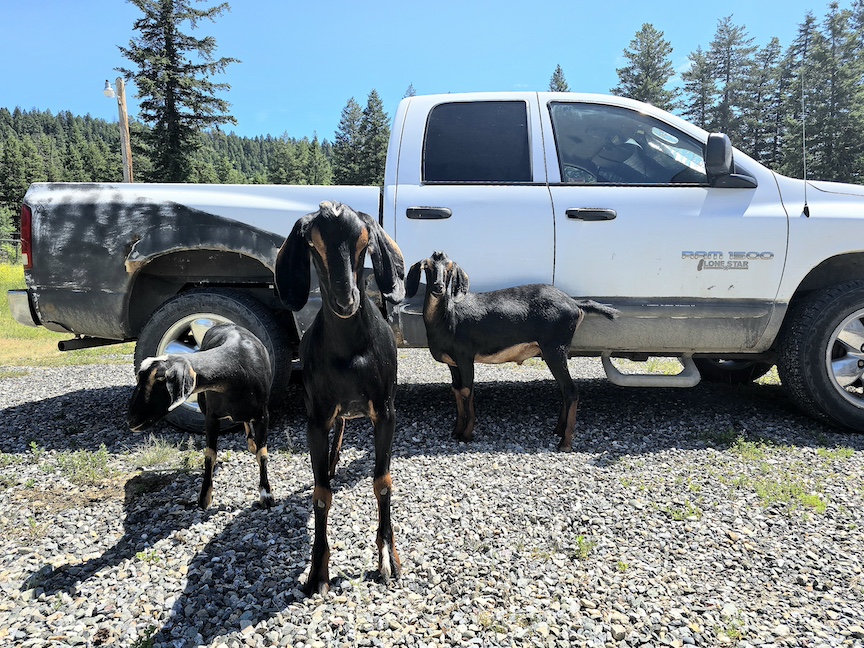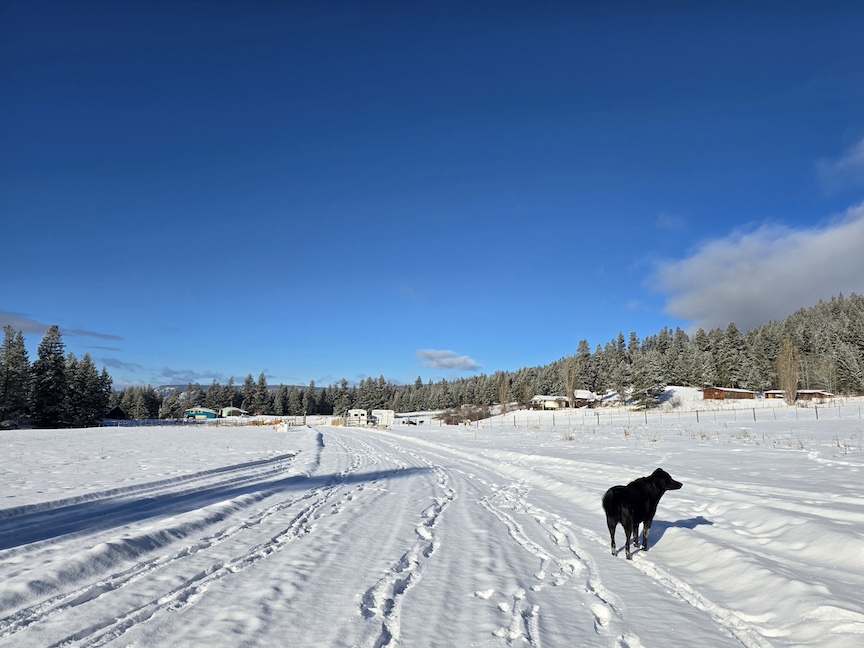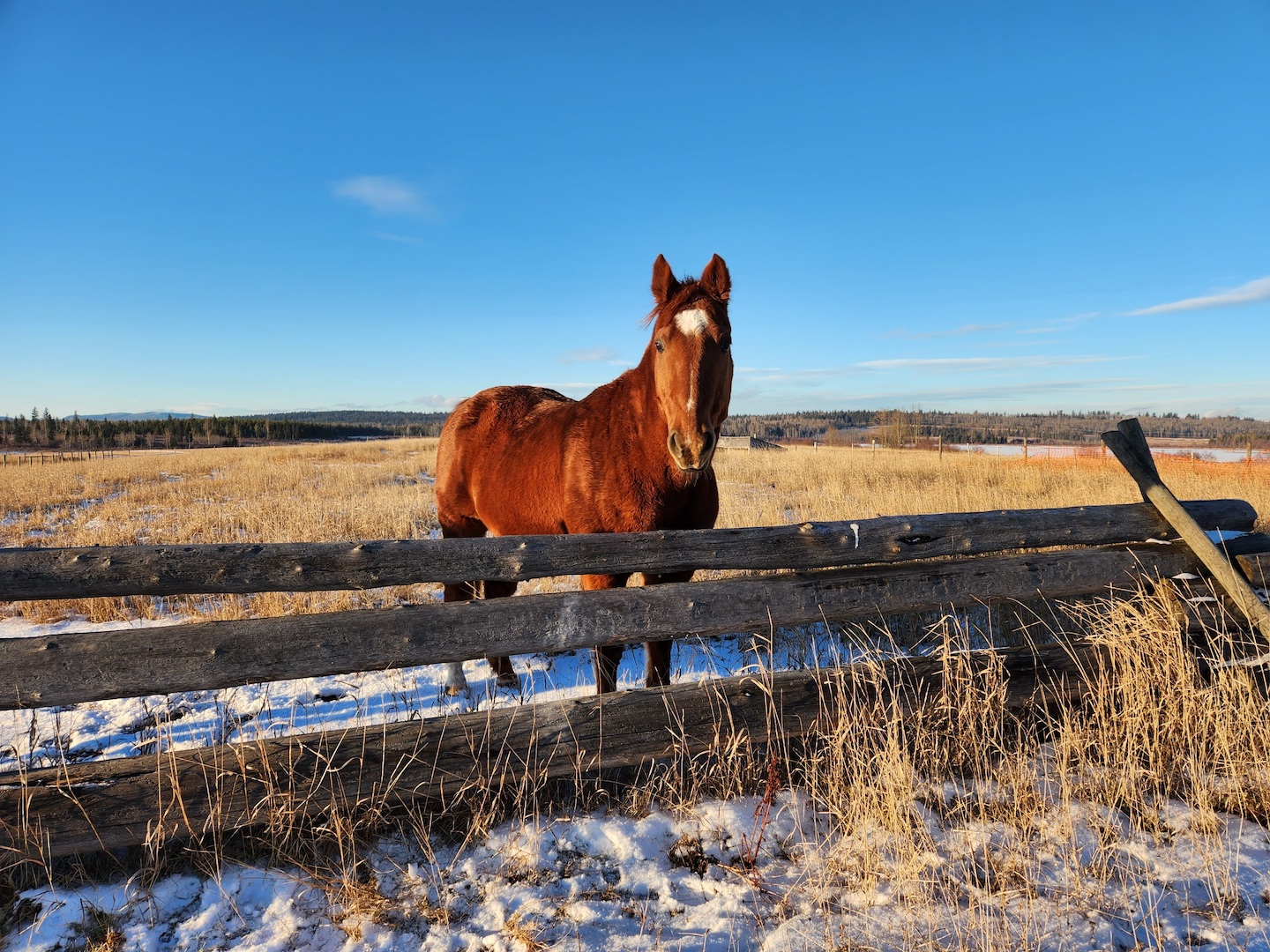Starring: Viggo Mortensen, Omar Sharif
Director: Joe Johnston
Released: 2004
Mood: If your BFF is your pet and you like animals way better than people and want to watch a movie that’s all about a man and his horse but you don’t want one of the cheesy ones for kids or the ones where the horse dies.
When I sat down to watch Hidalgo, I was on the fence about whether or not it’s a Western.
My boyfriend insisted it’s a Western, but then he described this horse race through Middle Eastern deserts and I was like… in what world is a movie about the EAST a f*cking WESTERN? I read the DVD jacket, and it did nothing to change my mind.
But I was wrong. Hidalgo is every bit a Western. It has clear Western tropes and themes – brushed with the feel-good touch of Disney:
- The central characters are cowboy Frank Hopkins (Viggo Mortensen) and his mustang horse Hidalgo
- Frank works for Buffalo Bill’s Wild West show
- Frank is a depressed alcoholic after witnessing the 1890 Wounded Knee Massacre, and the continued horrors upon the Lakota Sioux people (who are actually his people)
- Riders and horses fall prey to extremely brutal temperatures and weather
- At its heart, it’s a story about ancient tribes of people who are genuinely connected to horses
If you’re looking for a visually impressive, emotional weeknight Western with strong acting, Hidalgo is the perfect choice.

Hidalgo begins in 1890, when Hopkins and Hidalgo are cast members employed by Buffalo Bill Cody (J.K. Simmons). Hopkins is severely depressed (and severely drunk), because he was the dispatcher who delivered an order to troops that triggered the Wounded Knee Massacre. Hopkins’ mother was Lakota Sioux, but he hides his heritage.
Chief Eagle Horn (Floyd Red Crow Westerman) visits Buffalo Bill, and through Hopkins’ translations beseeches Bill’s help in rescuing the herd of wild mustangs the U.S. government has rounded up for euthanization. The tribe can’t afford to buy back their horses. Buffalo Bill says he can give the chief a better horse, but Hopkins can’t bring himself to translate the diss on mustangs, and instead says they’ll do what they can.
What they can do turns out to be entering Hopkins and Hidalgo into the ‘Ocean of Fire’, an annual 3,000-mile race across the Najid desert region against 100 of the greatest Arabian distance horses and Bedouin riders in the world. The purse is $100,000.
Of course, it’s not that simple. Although the Western story-loving Sheikh Riyadh (Omar Sharif) is fond of the cowboy, everyone else thinks he’s an infidel who shouldn’t be in the race. Hopkins experiences racism towards his whiteness, and racism towards his Native blood. And that’s not all:
- Shady Lady Anne Davenport (Louise Lombard) is determined to have her mare win at any cost, including Hidalgo’s life
- Katib (Silas Carson) will gladly kill to get his hands on the Sheikh’s breeding book and prized horse
- Prince Bin Al Reeh (Saïd Taghmaoui) will make the Sheikh’s rebellious horsemaster daughter Jazira (Zuleikha Robinson) his fifth wife if he wins.
No big deal.

The acting in Hidalgo is great. Even though the outcome is a bit predictable (it’s Disney after all), it’s easy to fall in love with the characters – or fully hate them.
Viggo Mortensen handily evokes both the classic rugged, stoic cowboy and Hopkins’ lifetime of suppressed anguish. It’s hard to pinpoint how he does it, since his face barely changes. But the way he looks at and touches Hidalgo is beautifully raw and vulnerable.
Maybe it’s because the dude loves horses so much in real life. Mortensen and screenwriter John Fusco each bought one of the American Paint horses who played Hidalgo. Mortensen has also previously bought his companion horses from Lord of the Rings; Fusco retired his Hidalgo at his American Indian horse conservancy.
Sharif is a great blend of strong warrior and endearing Western fan. Unlike Mortensen, he acts through his entire face and body. His eyes literally light up when he talks about Colt pistols and reads his dime novels.
T.J., one of the horses who played Hidalgo, is the second horse I’ve come across with his own IMDB page (the first being Ott, who co-starred in The Villain with Kirk Douglas). And like Ott, the various ‘Hidalgos’ often stole the show with their trained skills and facial expressions.

Hidalgo did its best to be respectful of the cultures represented. Apparently the production team had a group of consultants that included Lakota medicine men, historians, and tribal leaders to work on every single scene that represented their people. I hope that’s true, because we definitely need more of that in Hollywood.
That said, the movie faced controversy over its claims to being based on a true story. Historians and officials around the world went on record that almost every single plot point had never happened – where Hopkins was born, his entry in any of the 400 races he claimed to have won, and even the existence of the ‘Ocean of Fire’ race.
Check out a thorough detailing of that debunking in this article by True West Magazine.
Fusco still sticks to his guns that he based his story on years of research, including “surviving friends of Hopkins, notably former distance riders Walt and Edith Pyle, and Lt. Col. William Zimmerman, along with information found in horse history texts”. Nakota and Lakota people have said the story IS known to their people, and has been for generations.
Whether it’s true or not, it makes a GREAT f*cking story. I was into it, despite having to watch horses get wounded or die, which always makes me ugly cry (I cry during a LOT of Westerns). And despite that when Hidalgo runs off to embrace his wildness he’s still wearing shoes.
It’s a Pirates of the Caribbean of Westerns (the brilliant original, not one of the 500 sequels) – glorious effects, dramatic, and full of flair, with plenty of underplayed killing. I’ll definitely watch it again.


